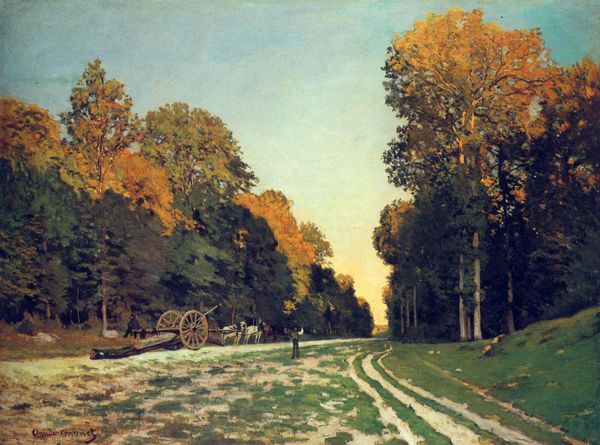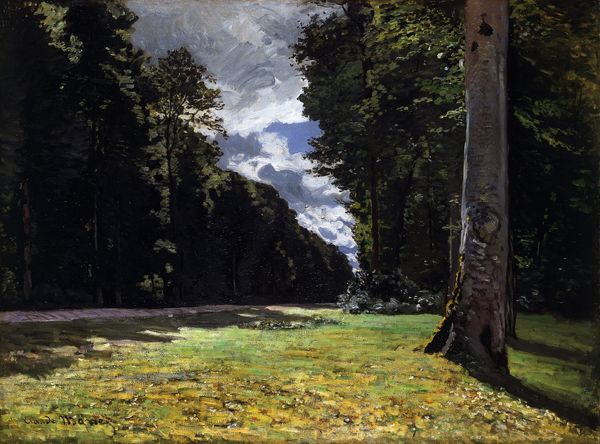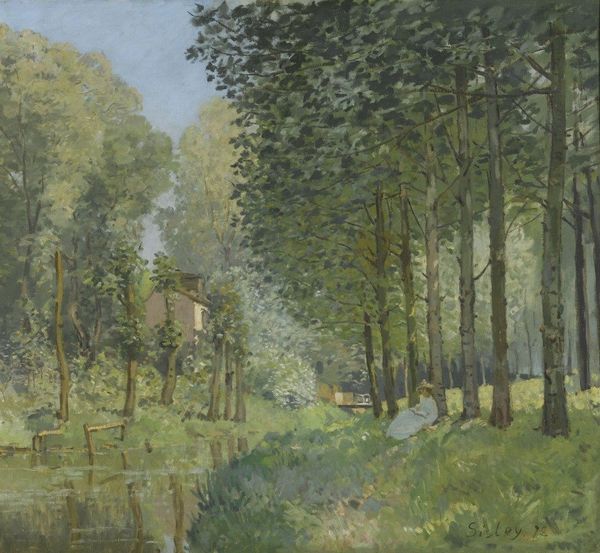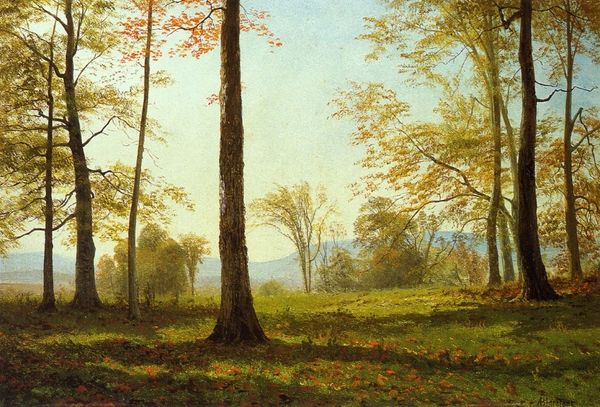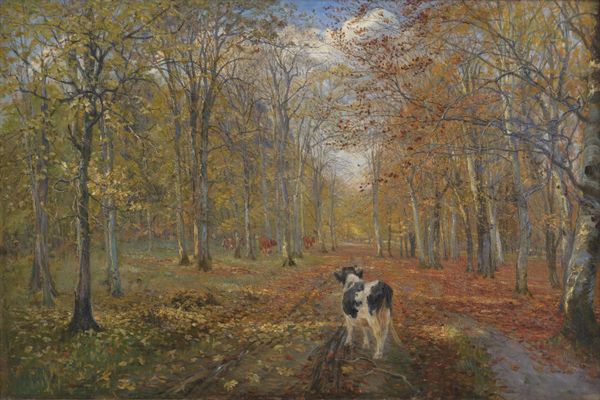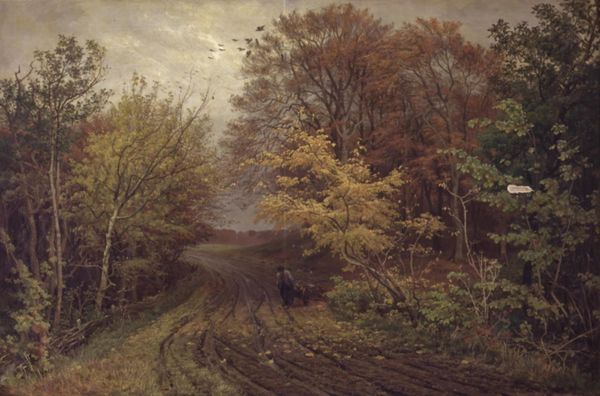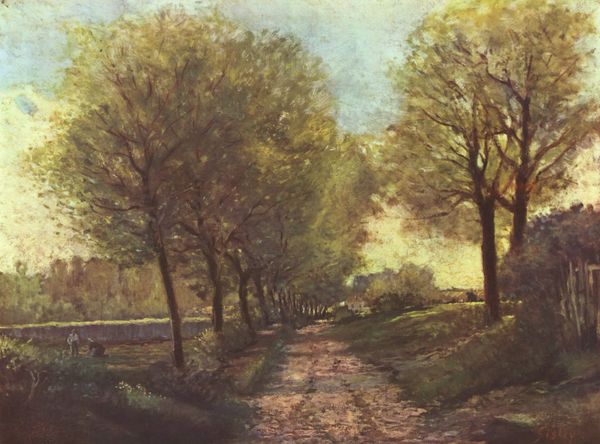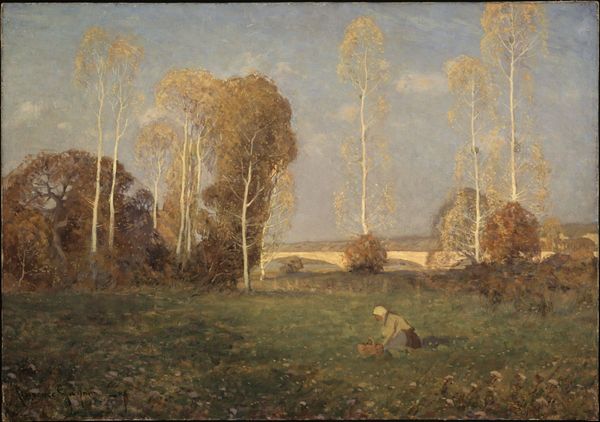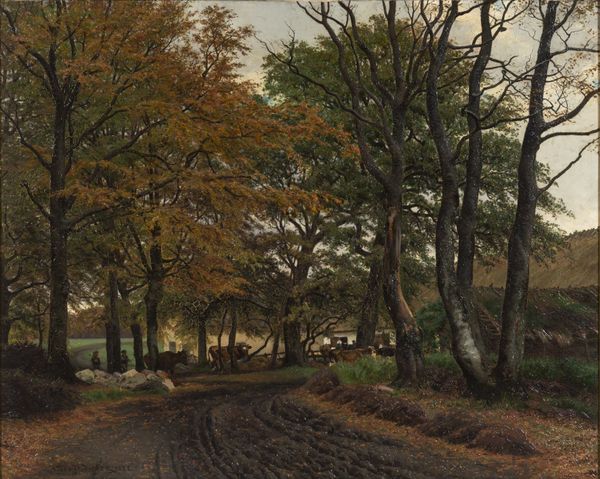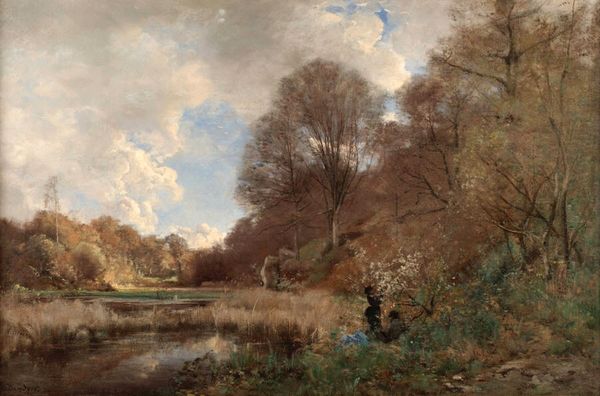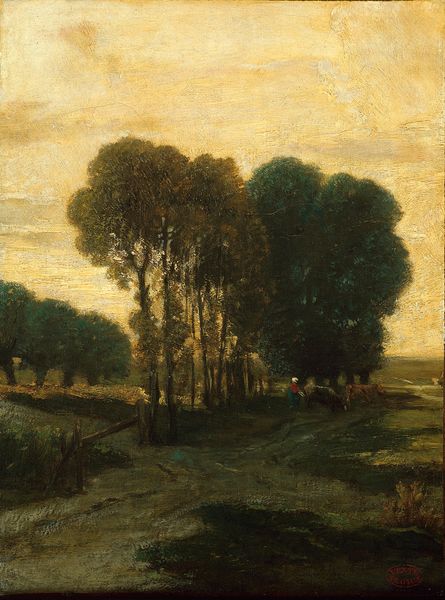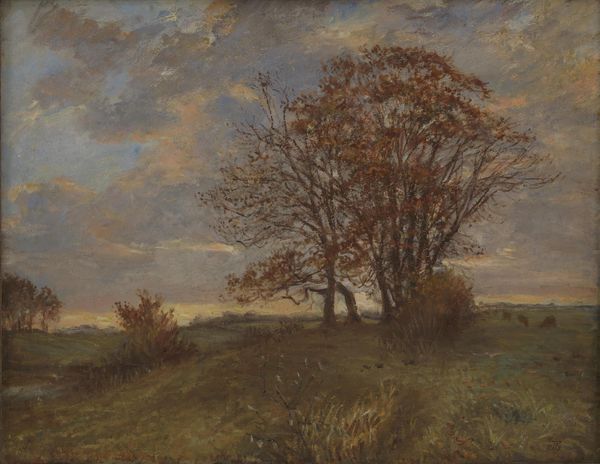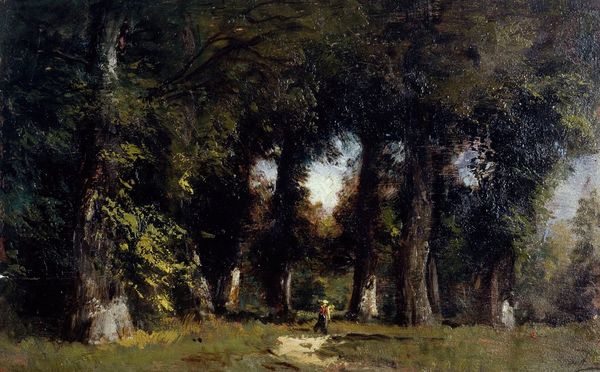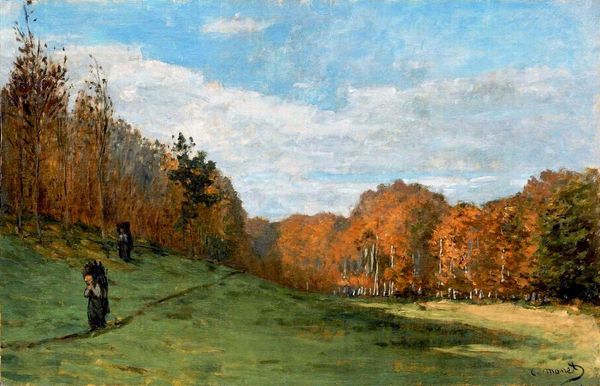
Copyright: Public domain
Claude Monet painted 'The Pave de Chailly' in France at a time of rapid social and economic change. This painting invites us to consider the changing relationship between nature and society. It captures a forest, but not a wild, untouched wilderness. Instead, we see a managed landscape, shaped by human needs and desires. The road, or "pave," suggests accessibility and connection, perhaps hinting at the increasing urbanization of rural areas. Monet's choice of subject matter reflects a broader cultural fascination with the French landscape. As a young artist, Monet was associated with the Barbizon school of painters. He absorbed some of their artistic techniques, but his goal was not to simply reproduce the landscape as it appeared. Instead, he explored the subjective experience of light and atmosphere. Understanding this painting requires considering the economic and social context. Art historians look at exhibition reviews and sales records to better understand the status of the artwork in its own time. In this way we can start to see how artistic visions are inevitably rooted in the changing world around them.
Comments
No comments
Be the first to comment and join the conversation on the ultimate creative platform.
